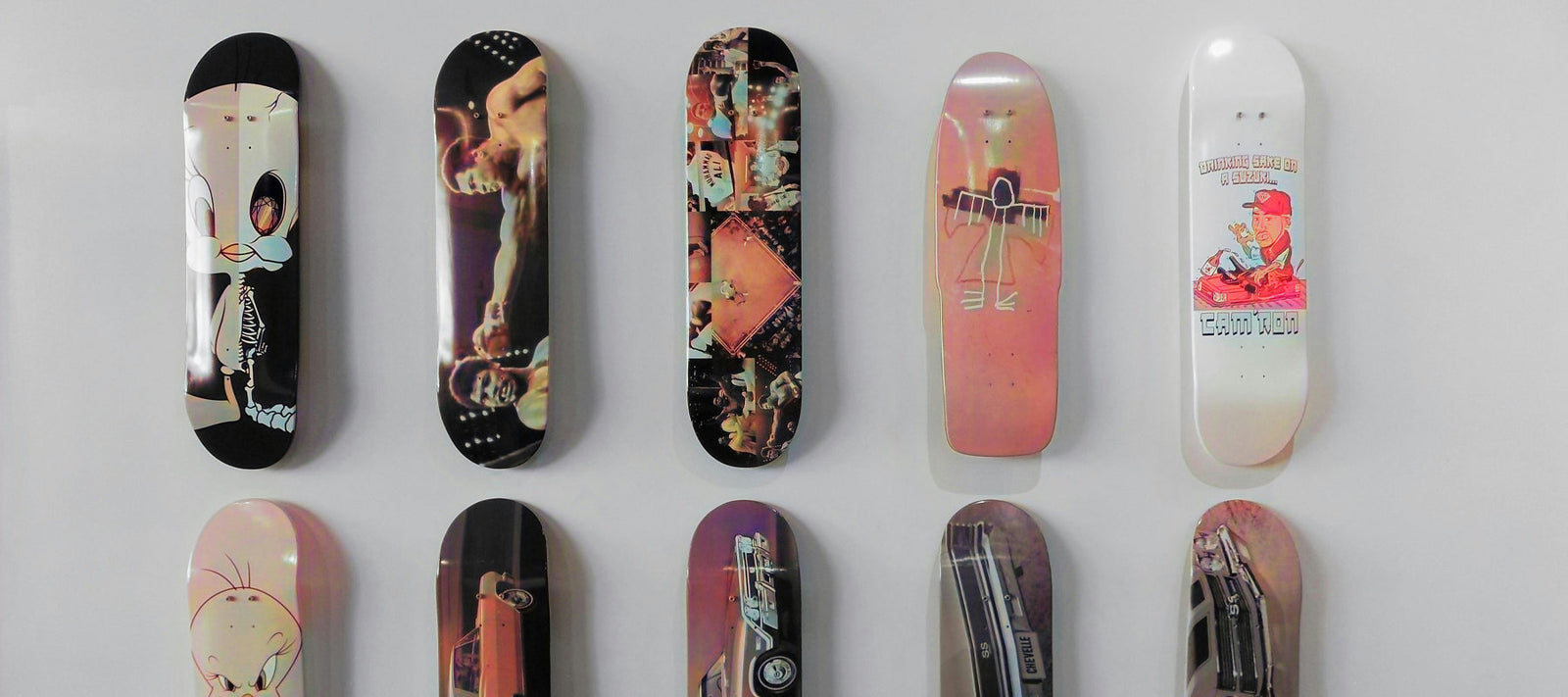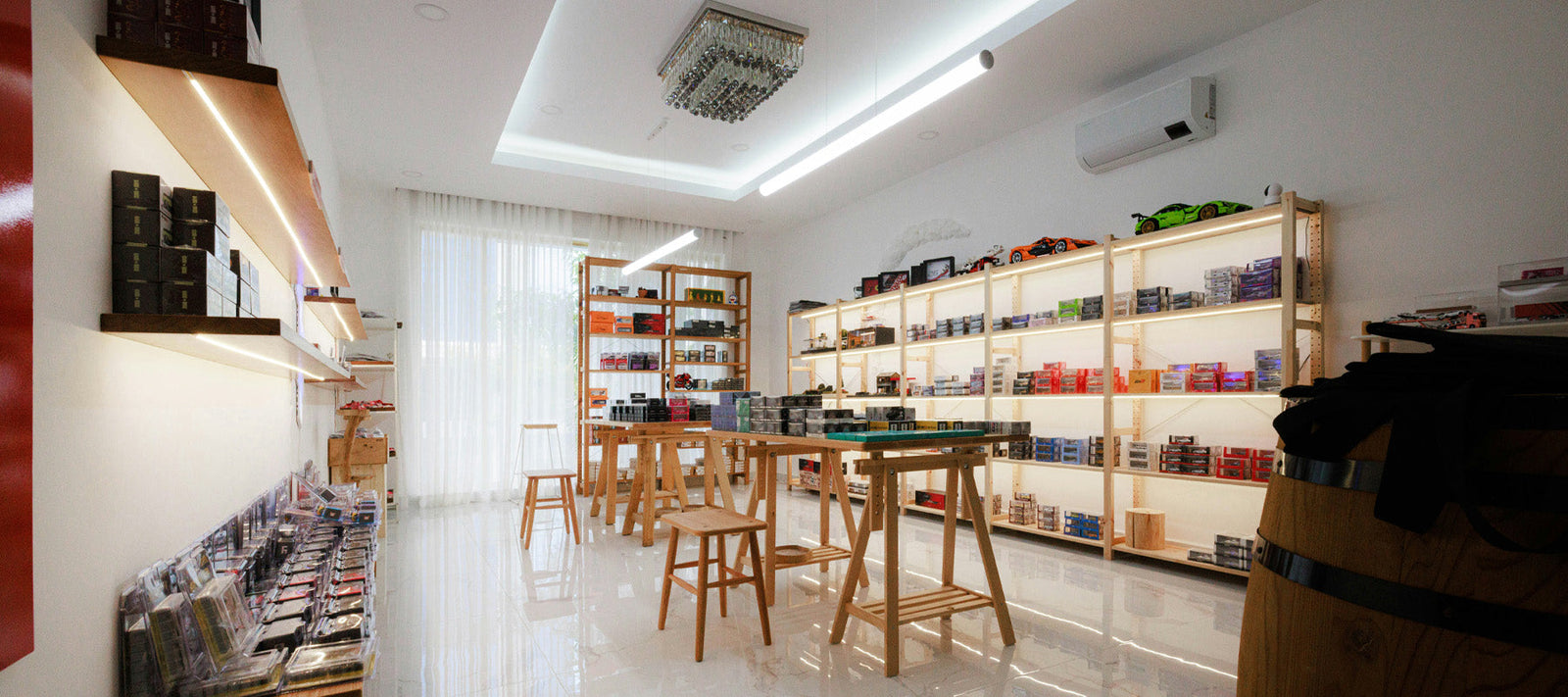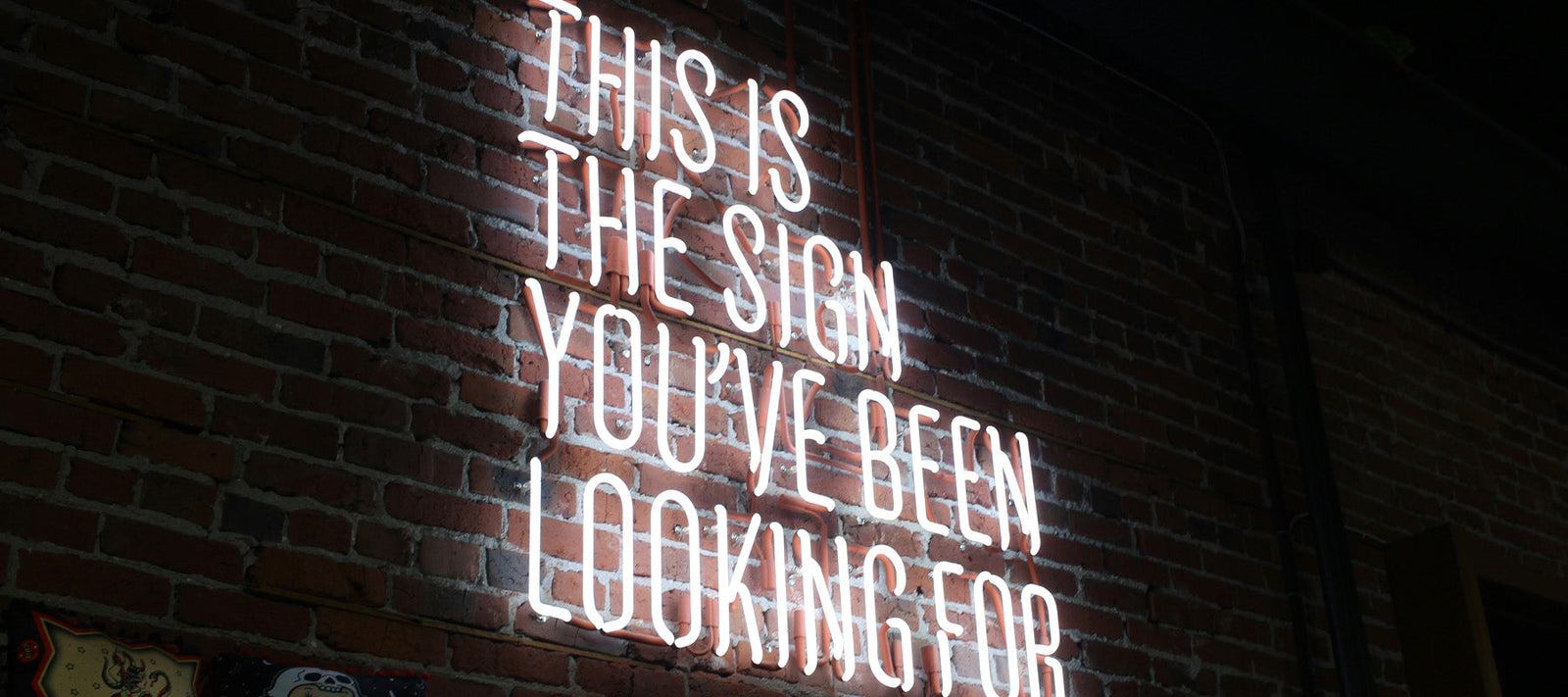In the highly competitive world of retail, success isn’t solely determined by the products you offer but also by how you present them. Retail displays are more than mere fixtures—they are powerful marketing tools that can influence consumer behavior, evoke emotions, and drive sales. By understanding and applying psychological principles to the design of retail displays, businesses can create compelling in-store experiences that engage shoppers and boost conversions.
This comprehensive guide explores the psychology behind effective retail displays, delving into the principles that influence consumer behavior and offering actionable tips for designing displays that resonate with your audience.
1. The Intersection of Psychology and Retail Display Design
The in-store experience is a critical element in retail success. Shoppers are bombarded with choices and distractions, making it essential for retailers to capture attention quickly. Effective retail displays serve as silent salespeople, guiding consumers through the buying journey. By integrating psychological insights into design, retailers can create displays that not only catch the eye but also foster an emotional connection with the customer.
This blog post will delve into the core psychological principles that underpin effective retail display design, explain how these principles influence consumer behavior, and provide practical strategies for applying them in your retail environment.
2. Understanding the Role of Psychology in Retail
Retail psychology examines how consumers interact with physical spaces and visual cues. The goal is to design environments that influence shoppers subconsciously by triggering emotional responses, guiding their attention, and ultimately persuading them to make a purchase.
Some of the key reasons why psychology is so crucial in retail display design include:
- Capturing Attention: In a crowded retail space, displays must stand out to grab the consumer's attention quickly.
- Stimulating Memory and Recall: A well-designed display can reinforce brand identity and ensure that consumers remember your products long after they leave the store.
- Eliciting Emotional Responses: Emotion is a significant driver of decision-making. A display that evokes positive emotions can significantly impact buying behavior.
- Encouraging Action: Strategic design elements can nudge consumers toward a purchase, whether through clear call-to-action prompts or interactive experiences.
Understanding these psychological underpinnings helps retailers design displays that not only inform but also inspire and engage shoppers.
3. Key Psychological Principles in Retail Display Design
To design retail displays that truly resonate with consumers, it’s essential to understand the psychological principles at work. Here are some of the most critical elements:
Attention and Perception
Human beings are naturally drawn to stimuli that stand out from the background. In retail, capturing a shopper’s attention is the first step toward engagement. Elements that can help include:
- Contrast: Using contrasting colors or lighting can make key elements pop.
- Movement: Dynamic displays or animations can capture attention more effectively than static images.
- Novelty: Unique and unexpected design elements pique curiosity, making the display more memorable.
Memory and Recall
Effective displays help consumers remember the brand and the product even after they have left the store. Techniques to boost memory and recall include:
- Repetition: Consistent visual themes and brand elements create familiarity.
- Storytelling: Displays that tell a story or convey a narrative help forge a connection with the consumer.
- Simplicity: A clear and focused message is easier to remember than a cluttered, confusing display.
Emotion and Decision Making
Emotions significantly influence buying decisions. Retail displays that evoke positive feelings can lead to impulse purchases and brand loyalty. Consider the following strategies:
- Color Choices: Colors can evoke specific emotions (e.g., red for excitement, blue for trust).
- Sensory Engagement: Incorporating tactile elements, sounds, or even scents can create a multi-sensory experience that enhances emotional impact.
- Contextual Cues: Displaying products in a lifestyle context that resonates with the target audience can foster a deeper emotional connection.
4. Design Elements that Leverage Psychological Insights
Now that we’ve explored the key psychological principles, let’s look at how specific design elements can be used to implement these insights.
Color Psychology
Color is one of the most potent tools in a designer’s arsenal. It can affect mood, influence perceptions, and guide behavior. Here are a few guidelines:
- Red: Often associated with excitement, urgency, and passion. It can encourage quick decisions and impulse purchases.
- Blue: Conveys trust, reliability, and calm. It’s ideal for creating a sense of security and professionalism.
- Green: Associated with health, tranquility, and nature. Perfect for eco-friendly products or promoting well-being.
- Yellow: Captures attention and conveys optimism, though too much yellow can be overwhelming.
When choosing colors for your retail display, consider the emotions you want to evoke and how they align with your brand identity.
Lighting and Ambience
Lighting is critical in setting the mood and highlighting the key elements of your display. It can dramatically alter the perception of space and product appeal:
- Spotlighting: Direct lighting on a product can draw attention to specific items.
- Ambient Lighting: Soft, overall lighting creates an inviting atmosphere, encouraging customers to spend more time in the area.
- Accent Lighting: Used to emphasize particular design features or create visual contrast.
The right lighting can not only enhance product visibility but also evoke the desired emotional response, making your display more engaging.
Layout and Visual Hierarchy
A well-planned layout directs the customer’s gaze in a natural flow from one element to the next. Visual hierarchy ensures that the most important messages or products are seen first:
- Focal Points: Create a central element that immediately draws the eye.
- Zoning: Divide the display into sections to organize information and guide the shopper through a narrative.
- Balance: Ensure that the design is visually balanced, preventing any area from appearing too cluttered or too empty.
A clear visual hierarchy not only improves aesthetics but also ensures that your message is communicated effectively.
Interactive and Sensory Experiences
Modern consumers crave experiences. Interactive elements and multi-sensory displays can transform a simple retail encounter into an immersive experience:
- Touchscreens and Kiosks: Allow consumers to explore product features, read reviews, and even make purchases directly.
- Augmented Reality (AR): Offers virtual try-ons or product demonstrations, making the shopping experience more engaging.
- Tactile Elements: Incorporating textures or materials that customers can touch helps create a physical connection to the product.
These elements can be particularly effective in creating memorable experiences that differentiate your display from the competition.
5. Case Studies: Real-World Successes in Retail Display Design
Case Study 1: Transforming a Fashion Retail Environment
A renowned fashion retailer revamped its in-store displays by integrating interactive digital mirrors and personalized lighting. The displays allowed customers to see different outfits virtually and adjust the lighting to match various settings. This immersive approach resulted in a 35% increase in customer engagement and a significant boost in sales, particularly among tech-savvy millennials.
Case Study 2: Enhancing Grocery Store Experiences
A leading grocery chain implemented sensory displays in its fresh produce section. The displays featured vibrant colors, ambient lighting, and even subtle scents associated with fresh fruits and vegetables. This multi-sensory approach not only increased customer dwell time but also improved overall customer satisfaction scores by making the shopping experience more enjoyable and memorable.
Case Study 3: Boosting Brand Loyalty Through Storytelling
A luxury cosmetics brand created a series of narrative-driven displays that told the story of their product origins and sustainability efforts. Using a mix of engaging visuals, ambient music, and interactive touchpoints, the brand was able to foster a deeper emotional connection with customers. The result was an increase in brand loyalty and a higher rate of repeat purchases.
6. Tips for Creating Psychologically Effective Retail Displays
Designing retail displays that truly resonate with consumers involves a blend of art, science, and strategic planning. Here are some actionable tips to help you create displays that not only capture attention but also drive results:
-
Know Your Audience:
Conduct market research to understand your target demographic. What are their preferences, habits, and pain points? Tailor your display design to meet their needs and expectations. -
Keep It Simple and Focused:
Avoid overwhelming shoppers with too much information or too many products. A clean, focused design helps convey your message more effectively and improves recall. -
Use Storytelling to Your Advantage:
Craft a narrative around your product or brand. Storytelling can create an emotional connection that encourages shoppers to engage with your display on a deeper level. -
Leverage Technology:
Consider incorporating interactive elements like touchscreens or augmented reality to create engaging, personalized experiences. Technology can transform static displays into dynamic experiences that capture and hold attention. -
Test and Iterate:
Use A/B testing or customer feedback to evaluate the effectiveness of your displays. Don’t be afraid to experiment with different designs and layouts to see what resonates best with your audience. -
Focus on Visual Hierarchy:
Prioritize your display elements so that the most important messages or products are immediately visible. Use contrast, size, and placement to guide the shopper’s eye naturally through the display. -
Integrate Sensory Elements:
Beyond visual appeal, consider how other sensory inputs—like sound, touch, or even scent—can enhance the customer experience. Multi-sensory displays are often more memorable and engaging.
7. The Future of Retail Display Design: Trends and Innovations
The landscape of retail display design is continuously evolving, driven by advances in technology and changes in consumer behavior. Here are some trends to watch:
Artificial Intelligence and Data-Driven Displays
AI can analyse consumer behavior in real time and adjust display content accordingly. For example, a display could change its messaging based on the time of day or the demographics of the shoppers nearby.
Virtual and Augmented Reality
AR and VR are making inroads in retail by offering immersive experiences. Imagine a display where customers can virtually try on products or explore product features in a simulated environment.
Sustainable and Eco-Friendly Displays
As consumers become more environmentally conscious, there is a growing trend toward using sustainable materials and energy-efficient technologies in display design. Eco-friendly displays not only reduce your carbon footprint but also resonate with a market that values sustainability.
Integration with Mobile and Omnichannel Experiences
Modern consumers often use their smartphones while shopping. Future displays will likely offer seamless integration with mobile apps, enabling features like personalised promotions, digital coupons, or interactive experiences that bridge the online and in-store worlds.
8. Designing for Success in a Competitive Landscape
The psychology behind effective retail displays is a powerful tool for creating meaningful, engaging shopping experiences. By understanding how attention, memory, and emotion influence consumer behavior, retailers can design displays that not only capture the eye but also inspire action. Whether it’s through thoughtful use of color, innovative lighting, or interactive technology, the key is to create a display that speaks directly to the needs and desires of your target audience.
In an era where the consumer experience is paramount, investing in psychologically driven design is not just a trend—it’s a necessity. Retailers who embrace these principles will find that their displays do more than showcase products; they build lasting connections, foster brand loyalty, and drive sales.
Ready to transform your retail environment with displays that truly connect with your customers? Contact us today to learn how our design expertise and innovative solutions can help you create retail displays that are not only visually stunning but also psychologically impactful. Let’s work together to design a retail experience that stands out in today’s competitive market.
Final Thoughts
Effective retail display design is at the heart of successful in-store marketing. By applying psychological principles—from understanding how consumers perceive color and lighting to leveraging interactive and sensory experiences—retailers can create displays that do more than just attract attention. They can influence behavior, evoke emotion, and ultimately drive sales.
As technology continues to evolve and consumer expectations shift, staying informed about the latest trends and innovations in retail display design will be crucial. Whether you are looking to refresh your current displays or embark on a complete redesign, integrating psychological insights into your design process will set you apart from the competition.
Remember, every detail counts. From the moment a shopper enters your store, the environment you create can make all the difference. Invest in quality design, test new ideas, and most importantly, listen to your customers. Their behavior and feedback are the best indicators of what works and what doesn’t.
In today’s fast-paced retail world, designing for success means marrying creativity with a deep understanding of human psychology. With the right approach, your retail displays can become powerful tools that not only communicate your brand message but also drive the customer journey from curiosity to purchase.
By embracing the psychology behind effective retail displays, you can elevate your in-store experience, build stronger customer connections, and ultimately achieve greater success in the competitive retail landscape.
Happy designing, and here’s to creating retail experiences that leave a lasting impression!






